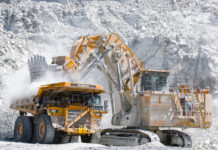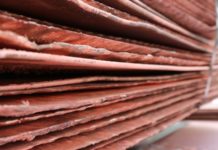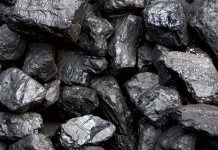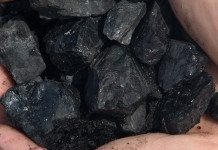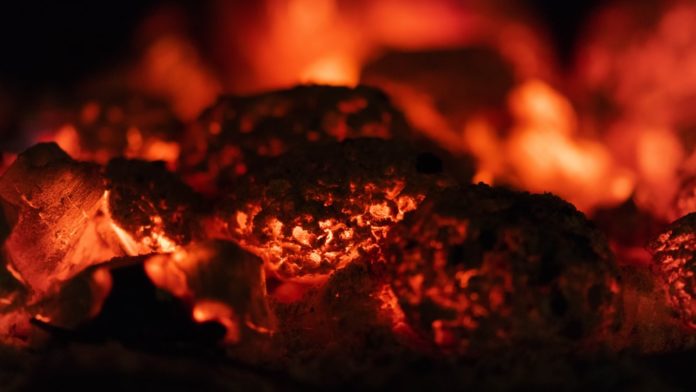
THE dirty commodity might be unpopular with some, but thermal coal is proving to be good business. Demand for the fuel was stoked to a record high of more than 8.5 billion tons last year, according to the International Energy Agency. It expects coal demand to remain robust until 2026, followed by a slow decline, partly driven by energy policy and subdued growth in China.
Ever the short-termists, shareholders want coal miners to maximise profits now. Tribeca Investment Partners, an Australian investor, wrote to Glencore last month asking it to reconsider the planned spinning out of its thermal coal mines via Teck Resources’ Elk Valley Resources, which the giant mining conglomerate bought last year.
By retaining its “world-class assets” Glencore “strategically supports its earnings profile”, Tribeca argued. Tribeca has been joined by other shareholders since it made its approach. “In most circumstances, we do not believe that simply divesting as quickly as possible will achieve the best outcome,” said Andrew Mason, head of active ownership at UK investment bank Abrdn, of Glencore’s plans.
Out of the $13bn that was recorded from industrial assets in the group’s 2023 earnings before interest, tax, depreciation and amortisation (ebitda), a chunky $8bn consisted of coal. This is double the next largest contributing commodity, which was copper — these days the poster child of the critical mineral family.
No wonder shareholders are anxious for Glencore to retain these assets. Even at an average seaborne price of $121/t, Glencore stands to collect $4.5bn in ebitda from coal this year. Profits from coal may outstrip copper again, which itself is on the up. In the last weeks of March, Japanese buyers settled at $124/t of coal with Glencore, according to a Morgan Stanley report. This is higher than the bank’s average realised base case assessment of $117/t for Glencore’s coal in 2024.
Governments, too, have paused for thought when it comes to coal.
Regulators in Australia’s sunshine state, Queensland, are under pressure to review its controversial royalty on coal revenues. Amid a contraction in the seaborne thermal coal price, there are fears of heavy job losses in the next five years.
“The tension plays itself out between jobs and infrastructure funding from royalties,” says Thungela Resources CFO Deon Smith. Thungela, which operates Queensland’s Ensham mine, pays the royalty. “If you are losing jobs, it will be difficult for the Queensland government not to revisit it.”
Thungela bought Ensham last year assuming production would be 3.2 million tons (Mt) to 3.5Mt annually (run of mine). However, it is finding that this year’s production might be as much as 4Mt, with the potential to do much more. While coal production from South Africa shrinks, so the opportunity to increase it in Australia rises.
Johannesburg’s pure plays
As it is a diversified company, Swiss miner and trader Glencore’s exposure to coal is diluted by other commodities. In addition to copper, it mines and markets nickel, which is under pressure, as well as ferrochrome, zinc and cobalt. For more direct exposure to the coal market, investors might consider the pure-play merits of Thungela and Exxaro Resources.
As with Glencore, Thungela and Exxaro registered solid 2023 operating and financial numbers. The two also share a tendency for conservatism — an outlook driven by the popular narrative that coal’s demand will eventually decline. Consequently, Thungela runs a R5bn buffer on its balance sheet and ended its financial year with net cash of R10bn, while Exxaro had net cash of R14.8bn as of December 31.
Both of them announced decent dividends: Exxaro declared a special R2bn dividend, effectively a pass through of the income it received from its 20.4% stake in Sishen Iron Ore Co. Thungela declared a R2.8bn payout.
“We have 28 brownfield options at Ensham, which we hope to cut to about five or six by the third quarter. But if you consider that there’s a total resource there of more than 1-billion tons and production is 4Mt … – July Ndlovu, Thungela CEO
Their share prices have been underwhelming, however. Thungela’s is 18% lower this year alone, which means its dividend payout is at a yield of no less than 16% — hence a R500m share buyback announced by CEO July Ndlovu this month.
Asked for his view on investment attitudes towards Thungela, Ndlovu parries: “Our job is not really to comment on the share price. We leave that to the market.” So, what’s concerning the market? One issue might be the capital spend Thungela has lined up, including R1.6bn-R1.9bn on two replacement projects in South Africa. Another is Ensham’s expansionary spend.
“We have 28 brownfield options at Ensham, which we hope to cut to about five or six by the third quarter,” Ndlovu says in an interview. “But if you consider that there’s a total resource there of more than 1-billion tons and production is 4Mt …”
Decision looming
That’s creating breathing room for Thungela regarding expansion elsewhere in the portfolio. Its strategy is to expand beyond South Africa’s borders, but growing existing assets is cheaper than undertaking mergers & acquisitions, and probably easier to do, as Exxaro is finding out. More than two years ago the group said it would build a kitty of R12bn-R15bn for acquisition of a noncoal asset in copper, vanadium or manganese. That aspiration proved hard to execute. Consequently, Exxaro expanded the range of possible acquisitions to critical minerals such as nickel or lithium, and didn’t set a timeline for clinching a deal.
Clearly, though, the pressure is on. The surprise special dividend was interpreted by RMB Morgan Stanley analysts last month as “less determination to diversify away from coal”. They concluded it “would be well received”. One wonders how Exxaro CEO Nombasa Tsengwa views such sentiments.
Actually, with deliberation. She told Miningmx recently that while she didn’t have a mandate from Exxaro’s board to seek out international coal as per Thungela, the group could do worse than return to undeveloped coal assets at Thabametsi in the Waterberg coal fields in Limpopo.
Tsengwa said South Africa will struggle to accommodate new renewable energy plans on its distribution network, which brings the supply of domestic coal to Mpumalanga, where most of Eskom’s power stations operate an option.
“Don’t ask me now,” she said. But decision time is coming.
A version of this article first appeared in the Financial Mail.




